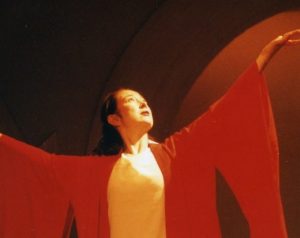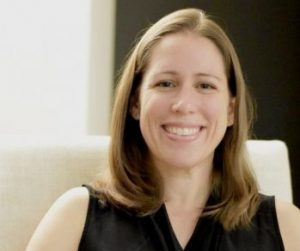
Jungto Society, the international Buddhist community founded by the revered Korean Dharma master and socially engaged Buddhist activist Venerable Pomnyun Sunim (법륜스님), recently conducted its 33rd annual pilgrimage across India and to Nepal. Held under the theme “Following in the Footsteps of the Buddha,” the pilgrimage, which ran from 19 January to 2 February, was attended by more 500 practitioners.*
This year’s pilgrimage was particularly notable for two reasons: first, the participation—for the first time in the Jungto pilgrimage’s 33-year history—of non-Korean practitioners: the 500-plus Korean Buddhist pilgrims were accompanied nine practitioners from Italy, Japan, Thailand, the United Kingdom, the United States, and Vietnam. Some of them are members of the International Network of Engaged Buddhists (INEB), including two bhikkhunis from Thailand, while others are graduates of Jungto Society’s English-language Dharma School. Second, the pilgrimage also coincided with celebrations for the 30th anniversary of Sujata Academy, a remarkable community school and social empowerment project established by Ven. Pomnyun Sunim in Dungeshwari, in the northeastern Indian state of Bihar. A project that has transformed the lives of an entire community of people who have faced systemic social and economic exclusion as a result of India’s conservative Hindu caste hierarchy.**
Jungto Society is a volunteer-run community of practitioners who aspire to embody the Buddhist teachings through social engagement, and by promoting a simple lifestyle centered on sustainable living. The community seeks to address the crises of modern society, such as greed, poverty, conflict, and environmental degradation, by applying a Buddhist worldview of interconnectedness and living in line with the principle that everyone can find happiness through Buddhist practice and active participation in social movements.
On the penultimate day of an extensive and, at times, grueling pilgrimage itinerary—through which the pilgrims were privileged to follow the footsteps of, and bear witness to, the key chapters in the life of Shakyamuni Buddha and the birth of the Buddhadharma some 2,600 years ago—BDG imposed on Ven. Pomnyun Sunim to take time away from his duties as the pilgrimage’s tireless guiding teacher, for a quiet moment of reflection on the past and the future.

BDG: 2024 is something of a landmark year for Jungto Society, marking the 33rd Jungto pilgrimage to India as well as the 30th anniversary of Sujata Academy.** Can you talk a little about your aspirations for the future of Sujata Academy?
Ven. Pomnyun Sunim: From the beginning, our primary goal at Sujata Academy was to eradicate illiteracy in Dungeshwari. Now that we can see we’ve been quite successful in attaining that goal, our remaining work could be providing higher education for the children, or assistance to help them find employment. You might say that this is our remaining objective, but, at the same time, I know that it’s unlikely we can completely address this issue.
Since it would likely be too difficult for us to provide higher education for all the children and to ensure that they are all employed, I am instead thinking about the alternative possibility of providing technical training.
In India, there is a great need for medical personnel, for example. And since India is now rapidly industrializing, there is also a great need for skilled tradespeople. So now I’m thinking in terms of training in trades related to construction—electricians, and so on. However, this goal is somewhat controversial within Jungto Society because our original intention was only to tackle the basics: ensuring literacy and numeracy for the community. At this point, we haven’t concluded whether or not we can or should go beyond this level.
Conversely, there are people who ask whether it wouldn’t be better for us to look at other communities where illiteracy and innumeracy are still rife, so that we can instead focus on addressing these basic issues for a greater number of people.
So this is where we are now, and we have yet to make a final decision.
Alongside these issues, there used to be a very high rate of tuberculosis within the community at Dungeshwari—something like 300 people. Now there are fewer than 10 cases. So we can see that our aspiration to introduce a high level of comprehensive healthcare has also been successful. Likewise, the rate of infant mortality has been greatly reduced, as well as the mortality rate for women giving birth. And this is all thanks to setting up small local medical centers and mobile clinics, which can treat minor emergency cases and ailments—broken bones, snake bites, and the like. For more serious health conditions, then we will send the local residents to a government hospital for more specialized treatment.
We also have a broader community-development plan, which was drawn up from the beginning but has yet to be fully implemented. We can say, for example, that we’ve successfully solved the problem of ensuring access to clean drinking water, but we fallen short of success in some areas, such as increasing the earnings of local residents.
If the locals had landholdings, we could help them set up and manage a cooperative. Then they could increase their earnings by working together. However, most of the local residents are Dalits,*** who don’t have any land holdings and can only earn money through their labor. And they’re also shouldering high levels of debt. So far, we haven’t found a sustainable way to overcome this situation.
We have looked into helping the local community to set up a micro-financing and micro-banking scheme, but because of local security issues, we haven’t been able to move ahead with that yet.
This is the current situation as it stands.

BDG: This is, auspiciously, Jungto Society’s 33rd pilgrimage to India and Nepal. It’s also the first time that non-Korean Jungto members and students have participated in the pilgrimage. Does this indicate a new landmark in the growth of Jungto Society?
Ven. Pomnyun Sunim: Because I don’t speak English, it has been until now quite challenging to accommodate non-Koreans on the pilgrimage to learn about the life and teachings of the Buddha in their historical context.
Most of the time when people participate in a pilgrimage, it’s generally undertaken as a religious activity or observance; there are few opportunities for practitioners to engage in a pilgrimage as a means to follow in the footsteps of the Buddha. It’s my wish for the future that people from all over the world can have this kind of opportunity to learn about the Buddhadharma and to walk in the footsteps of the historical Buddha.
From this perspective, the 33rd pilgrimage has been a kind of trial run! We’re hoping to find out how we can make what we’ve been doing—Jungto’s style of pilgrimage—available to a broader cross-section of pilgrims and practitioners. We’re giving it a try!
There are a few challenges for everyone involved. First of all, we follow quite a tough schedule on the pilgrimage. Secondly, the eating, sleeping, and travel arrangements are all quite simple. And because I aim to show the life of the Buddha in as much detail as possible, the pilgrimage becomes very long, yet I feel that it would be such a pity to remove some important sites from the itinerary! I want to fit in as much as we can in the time we have available, which is why we have such a tight and rigorous schedule and move around so much.

BDG: Does this mean that Jungto Society’s international membership is growing?
Ven. Pomnyun Sunim: Through the introductory course of Jungto Society’s English-language online Dharma School, we have an intake of about 100 international students per year. Although, this is not to say that all of those students go onto to become Jungto members. And for these students to then participate in the pilgrimage requires significant time and financial considerations. So we’ll have to see!
BDG: While the pilgrims were visiting Vaishali, you spoke about the possibility of establishing a monastery for female monastics.
Ven. Pomnyun Sunim: In the Theravada world, there’s still a lot of institutional resistance to the full ordination of female monastics. Even Thailand and Myanmar are reluctant to acknowledge ordained female monks, although they have their own reasons for this. When Buddhism became established in those countries, the bhikkhuni order had already disappeared. As a consequence, in the present day they are still quite negatively disposed toward the idea. But if we study the sutras in the Nikaya, it is clearly written that the Buddha himself acknowledged the female monastic sangha.
It was in Vaishali that the Buddha first allowed women to join the monastic sangha, so it’s quite fitting to establish a monastery for bhikkhunis there because that’s exactly what the Buddha did 2,600 years ago. And I think that this would also help to set a clear precedent for the Theravada Buddhist world.
One reason why so many male Theravada monks do not accept the ordination of bhikkhunis is because many women from Theravada societies turn to Mahayana traditions in order to receive ordination. So while there is indeed a plan to ordain bhikkhunis and to build a bhikkhuni monastery, it’s important that the bhikkhunis themselves should take the lead in manifesting this. I’ve had several discussions with bhikshunis in Korea on this matter, but so far they don’t yet feel quite ready or confident enough to take on this project. If they do, I’m quite willing to offer my support for their undertaking, but so far there are no bhikshunis who are ready to take the lead.
In Korea, bhikshuni ordination is already well established and accepted, and Korean bhikshunis are very focused on addressing problems within Korea. So now I’m giving more thought to entering into discussions with nuns in Theravada societies who are already established yet seeking greater acceptance. The main issue is that if Korean bhikshunis were to take the lead in this project they would have great degree independence, and so the Theravada bhikkhunis could be supported by the Korean bhikshunis. However, if Jungto Society holds hands directly with bhikkhunis from the Theravada tradition, then Jungto may be placed in a position of having to provide continual support because the bhikkhunis don’t yet receive support from within their own tradition. As such, we still need to explore more avenues before we can bring this project to reality.

BDG: The pilgrimage’s visit to Kushinagar, the site of the Buddha’s mahaparinirvana, was a powerful experience . . .
On the night of the celebrations to mark the 30th anniversary of Sujata Academy, after the fireworks display, some Jungto members expressed a wish that the academy could last forever. When Sunim overheard, you made a poignant yet important observation about the impermanence of all things—the teachers at the academy, the young students, the pilgrims and Jungto members, and the academy itself are all going to live their lives and then die.
So my questions is: when Sunim is no longer in a position to take a central leading role in Jungto Society, how will the community and the work of the volunteers move forward?
Ven. Pomnyun Sunim: Those who are still living will take care of it! [Laughing] I don’t have to worry about what happens to my work after my death, because I can’t even solve all the problems while I’m alive!
While it might be true to an extent to say that Jungto Society is highly dependent on me, we can also see that all of the members, especially the Dharma teachers, have clearly defined roles and the community is run in a very democratic way.
If I go away, it’s possible that Jungto Society may hesitate initially, for short period, but I’m confident that they will manage because it’s run as an organization based on well-established systems and principles.
I’ll admit that the ability I have as a public figure to engaged with large numbers of people will be reduced. Yet we can see, for example, that the Jungto Dharma School is already running well without me, compared with 30 years ago when I used to give the lectures directly myself. After that, we started using audiotapes to share Dharma talks, and later on videotapes—all well before the advent of digital technology and the internet. Nowadays, the school is run as a collective of small groups, so I don’t need to intervene at all.
So by following this way of operating, I don’t think there are going to be any big problems.

BDG: While all of this is true, I think that Sunim’s charismatic presence and spontaneous style of Dharma teaching are going to be difficult to replace!
Ven. Pomnyun Sunim: Buddhism is 2,600 years old, and this long lineage is made up of the people who followed the Buddha, not the Buddha himself. The teaching continues, but it adapts to the circumstances and conditions of each particular time and place.
In the past, the teachings were preserved and transmitted orally, and later by written scriptures. Now we’re using digital video and the internet to do the same, so we can say that it has become much, much easier to spread the Buddhadharma.
Anyway, as society and culture changes, the leadership should also change; one person doing it for too long is not that good!

** Special Report: The Hope of the World – Ven. Pomnyun Sunim Marks the 30th Anniversary of the Sujata Academy Project in India (BDG), Sujata Academy: The Power of Hope and Compassion in India (BDG), and The Hungry Should Eat: JTS Brings Buddhist Compassion and Relief to India (BDG)
*** Believed to date back more than 3,000 years, the caste system remains culturally pervasive throughout India. Although discrimination against lower castes is constitutionally forbidden, segregation, discrimination, and exploitation remain a daily reality for the country’s roughly 200 million Dalits, who are not permitted to attend the same temples or schools, or even drink from the same cups or wells as so-called “higher” castes.
See more
Pomnyun
Jungto Society
JTS Korea
JTS America
Related news reports from BDG
Special Report: Footsteps of the Buddha – Ven. Pomnyun Sunim Leads 500 Practitioners on the 33rd Jungto Pilgrimage across India and Nepal
Special Report: The Hope of the World – Ven. Pomnyun Sunim Marks the 30th Anniversary of the Sujata Academy Project in India
Related features from BDG
Sujata Academy: The Power of Hope and Compassion in India
The Hungry Should Eat: JTS Brings Buddhist Compassion and Relief to India
In the Footsteps of the Buddha: Ven. Pomnyun Sunim Leads 1,250 Jungto Practitioners on a Pilgrimage to India
Related videos from BDG
Dharma Q+A with Ven. Pomnyun Sunim
Wisdom Notes from Ven. Pomnyun Sunim














